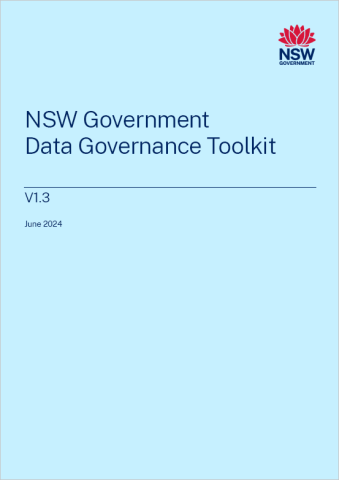Module 12: Data Governance & Management (DG&M) Capability, Checklist and Template
This assessment, checklist and template outlines the best practice elements of an effective data governance program for NSW Government agencies. It is not exhaustive or mandatory. New and updated templates and checklists have been updated and developed to assist and fast-track the framework development based on feedback received.
Conducting a readiness self-assessment in data governance is imperative for several reasons. Firstly, it allows Agencies to comprehensively evaluate their current data infrastructure, policies, and procedures, encompassing aspects such as data collection, storage, processing, and usage. Clear goals and objectives can then be defined based on this assessment, guiding the development and implementation of an effective data governance framework, whether it be improving data quality, complying with regulations, facilitating data sharing, enhancing security, or supporting decision-making. Identifying key stakeholders, from Executive Directors to data owners and IT teams, is crucial for program success. The assessment also helps evaluate Agencies readiness to adopt a data governance framework, determining the data governance maturity level and identifying associated risks and challenges.
The results inform the development of a roadmap, highlighting areas of readiness and improvement, which can be used to create a plan for effective data governance implementation. Additionally, the assessment ensures alignment among executive sponsors and stakeholders, awareness of timelines and resource commitments, and the documentation of mitigation plans for identified gaps in readiness. The ultimate goal is not to be overly critical but to create an accurate picture of the Agencies’ data governance readiness to guide its development and implementation. Complete the capability assessment to gauge your (or your team’s) readiness to commence the data governance framework project.
Checklists and templates play a crucial role in the development of data governance for various reasons. Firstly, they ensure standardisation, promoting a consistent approach to data governance throughout the Agency. Secondly, these tools enhance efficiency by providing a structured format for various data governance tasks, saving both time and resources. Thirdly, checklists and templates contribute to comprehensiveness, ensuring that all essential aspects of data governance, such as strategy, organisational structures, roles and responsibilities, leadership, data culture, workforce skills, and technology, are adequately considered. Additionally, they aid in risk mitigation by identifying and addressing potential risks associated with data governance.
These tools also facilitate clear communication among stakeholders regarding data governance policies and procedures. Furthermore, they serve as valuable training resources for new team members, helping them understand the Agencies’ data governance framework. Moreover, checklists and templates offer a means for assessing the effectiveness of data governance policies and identifying areas for improvement. It is essential to customise these tools to align with the specific needs and context of the Agency. An updated version of the data governance checklist and template has been developed to fast-track your framework development.
